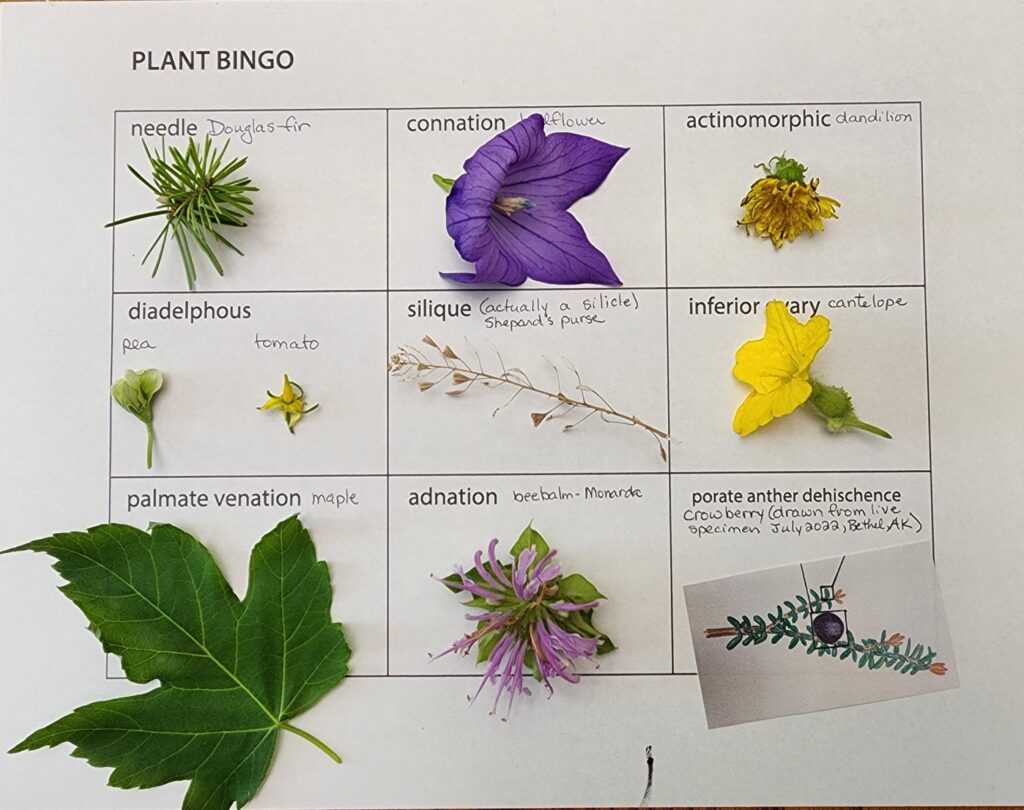
I tried to find a live specimen for the “porate anther dehiscence”. I had just planted an American wintergreen, which is in the Ericaceae family, but the squirrels had eaten all the berries! I decided to use my drawing of crowberry that I drew for EBOT 100 last summer. There are not a lot of the Ericaceae family in my area, so that was the best I could do.


Thanks Denise,
this is great! Yes, you also can replace one of the terms with a term you would like to feature with an image, so these all work well. The porate anther dehiscence is always a bit tricky, especially if you are not in Alaska. Here is a recent example from a dissection of Vaccinium uligonosum with porate anther dehiscence and anther appendages.
That is really interesting. I don’t even remember learning about that in botany during my undergrad (so, so long ago). I want to find plants that have that feature, here. We don’t have too many Ericaceae species here, but we have a few. I’ll be on the hunt for them!
Hi Denise. This is awesome and so helpful. Can you explain why the bee balm shows adnation? I need some more examples, please and thank you!
The mint family (Lamiaceae) generally has stamens adnate to the corolla. Here is a dissection of Hanceola suffruticosa Y.P. Chen, A.J. Paton & C.L. Xiang (Lamiaceae) flower from https://phytokeys.pensoft.net/article/49995/zoom/fig/12/ showing the stamens attached to the corolla, a good example of adnation.